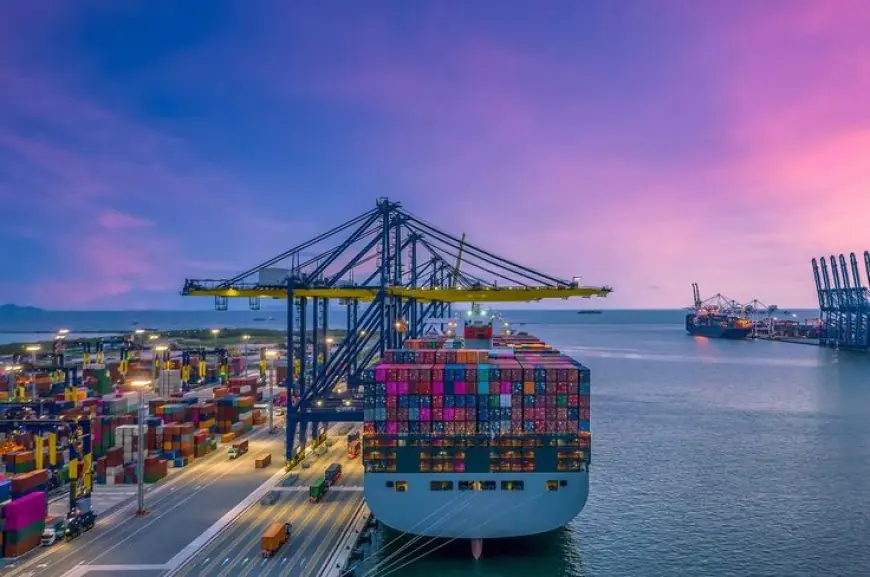How Fleet Logistics Support Transforms Day‑to‑Day Operations
Discover how fleet logistics support can improve operations from data‑driven routing to predictive maintenance driving efficiency, safety, and growth.

This isn’t just a question for logistics managers it’s the core of a modern competitive strategy. In an era when customers track packages in real time and supply chains span continents, fleet logistics support is the silent engine that keeps goods, people, and profits moving. Below, we explore nine high‑impact ways robust support elevates operational performance, trims costs, and future‑proofs your business.
1. Data‑Driven Dispatching: From Guesswork to Clockwork
Traditional dispatching leans heavily on driver intuition and static schedules. Fleet logistics support platforms ingest live traffic feeds, weather alerts, and customer delivery windows to generate optimal routes on the fly. This shift slashes fuel consumption, reduces idle time, and ensures drivers reach customers when promised—turning punctuality into a brand feature instead of a gamble.
2. End‑to‑End Visibility: One Dashboard, Infinite Insight
A single pane of glass view—integrating GPS telematics, warehouse inventories, and order management—lets planners solve problems before they ripple downstream. Whether a delay stems from port congestion or a forklift breakdown, support teams can reroute, consolidate loads, or notify customers proactively. That visibility shortens the decision loop from hours to minutes, preventing small hiccups from becoming headline failures.
3. Predictive Maintenance: Stop Fixing, Start Preventing
Downtime is devastating. Modern fleet logistics support harnesses IoT sensors that stream engine temperature, vibration, and brake‑pad wear. AI models translate those readings into maintenance alerts well before a breakdown occurs. By scheduling repairs during low‑demand windows, operators maintain near‑perfect fleet availability while cutting emergency repair costs by up to 40 percent.
4. Compliance Automation: Navigate the Regulatory Rapids
From Hours‑of‑Service (HOS) rules in North America to the EU’s tachograph mandates, regulations grow stricter every year. Support platforms automatically log driver hours, flag infractions, and generate audit‑ready reports. This automation keeps fines at bay, protects permits, and frees managers to focus on strategic improvements rather than paperwork.
5. Sustainability Metrics: Greener Miles, Stronger Margins
Sustainability isn’t just ethical—it’s economical. Fleet logistics support tools monitor carbon output per route, suggest eco‑friendly driving behaviors, and recommend load‑consolidation opportunities. Firms that publish these metrics often secure preferential contracts with eco‑conscious clients, turning carbon reductions into revenue gains.
6. Dynamic Capacity Planning: Flex for Peak and Lull
Retail’s “bullwhip effect”—where small demand shifts trigger large swings in inventory—can whiplash transportation networks too. Support systems analyze historical sales, promotional calendars, and macroeconomic indicators to forecast volume surges. Armed with this insight, managers can arrange spot‑market carriers or scale down leased vehicles, aligning capacity with actual demand instead of hope.
7. Driver Engagement & Safety: Human‑Centric Tech
Telematics reports reveal harsh braking or speeding, but great support translates numbers into coaching. Gamified dashboards rank performance, reward improvements, and nudge safer behaviors. Simultaneously, panic‑button integrations alert control centers in emergencies, accelerating response times and boosting driver confidence—a critical retention factor in a high‑turnover industry.
8. Seamless Customer Experiences: Logistics as a Differentiator
Customers no longer accept vague “out for delivery” notices. Fleet logistics support systems generate real‑time ETA texts, live tracking maps, and self‑serve rescheduling options. This transparency reduces “Where is my order?” calls, lifts Net Promoter Scores, and converts logistics from cost center to competitive edge.
9. Scalability & Future‑Proofing: Building Blocks for Innovation
Cloud‑native support suites integrate effortlessly with emerging tech—think drone inventory counts, autonomous yard trucks, or blockchain‑secured temperature logs. By adopting modular platforms today, fleets position themselves to plug‑and‑play tomorrow’s breakthroughs without ripping out yesterday’s investments.
Conclusion
So, how can fleet logistics support improve operations? By fusing real‑time data, predictive analytics, and human‑centric design, it converts chaotic variables—traffic jams, equipment failures, regulatory shifts—into manageable, even strategic, levers. Companies that treat fleet logistics support as a core competency, not a cost line, consistently outperform peers in speed, reliability, and customer satisfaction.
In short, Fleet Logistics Support is no longer optional insurance against disruption—it’s the blueprint for operational excellence in 2025 and beyond. The question isn’t whether to invest, but how quickly you can accelerate the transformation.
What's Your Reaction?
 Like
0
Like
0
 Dislike
0
Dislike
0
 Love
0
Love
0
 Funny
0
Funny
0
 Angry
0
Angry
0
 Sad
0
Sad
0
 Wow
0
Wow
0

















































